LEED Certification: An International Standard
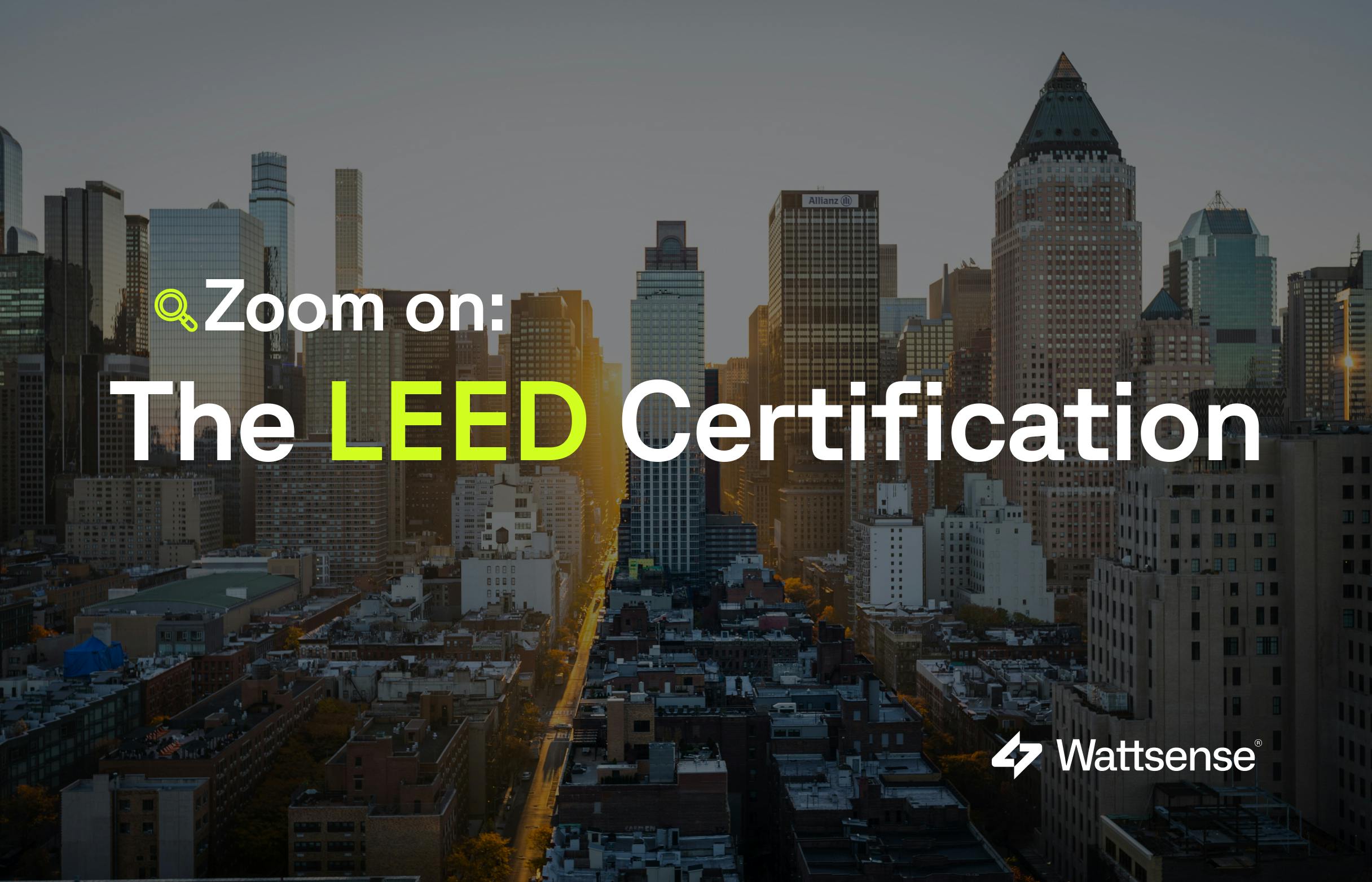
The proliferation of environmental certifications and labels in the construction industry worldwide is due to the growing awareness of ecological issues in real estate. Emerging as early as the 1990s, these quality marks from various countries merit pushing builders and building managers to consider the impact of their properties on climate and pollution. Among the labels recognized today for their seriousness and effectiveness, LEED certification is widely prevalent worldwide.
What is a LEED Certification?
LEED (Leadership in Energy and Environmental Design) represents a set of construction standards focused on sustainability. This certification applies to both new buildings and renovations. It encourages efficient energy management, the use of sustainable materials, and optimized water consumption.
The main objective of LEED is to reduce the environmental impact of buildings, notably by minimizing carbon emissions and optimizing energy efficiency.
A certification born in the United States
Initiated in the United States in 1998 under the auspices of the US Green Building Council, a non-profit American organization, LEED certification quickly gained popularity internationally.
It is particularly favored in North America but is expanding to Asia and Europe. In France, the French HQE (High Environmental Quality) label remains the most prevalent. However, LEED certification is starting to gain ground in the Paris region, especially in large real estate projects. To date, over 100,000 projects worldwide have obtained the LEED certification.
How to obtain a LEED Certification?
Obtaining LEED certification, like most recognized labels, is a demanding process that requires preparation and takes some time.
Everything Starts with Registration
The first step to obtaining LEED certification is project registration. It is highly recommended to engage with a specialized and accredited LEED Assistant Project Manager (APM). This professional plays an essential role, in guiding owners and developers through all necessary steps to obtain certification.
Before being admitted to engage in the certification process, it is necessary to:
- Conduct a LEED feasibility study.
- Have a construction or renovation project compatible with LEED requirements.
- Develop the LEED submission file for different project phases.
- Establish a low-impact environmental site management plan.
A Multidimensional Certification
Similar to the BREEAM certification the LEED certification addresses various aspects of a building. It considers eight distinct categories:
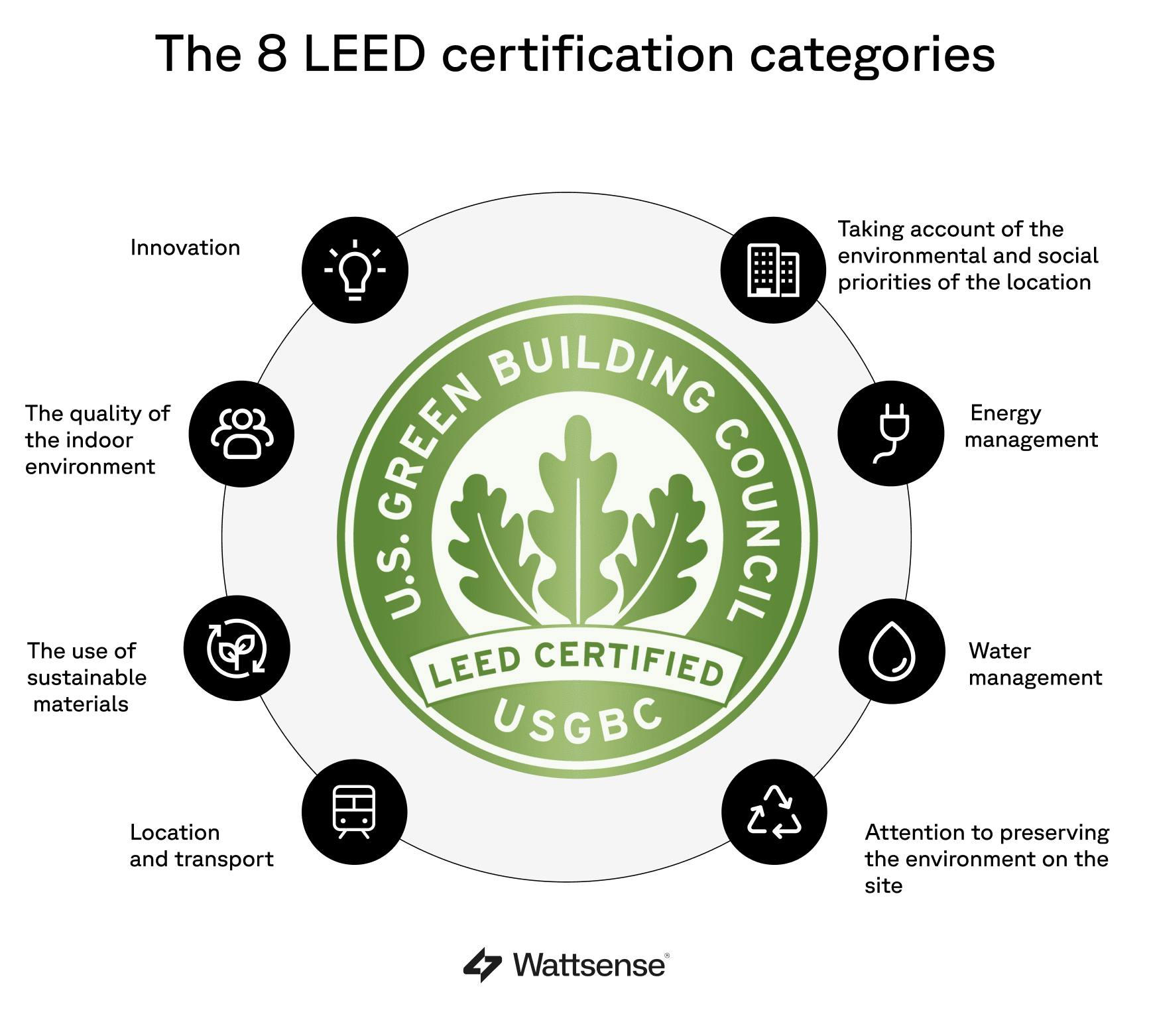
1. Site selection: This involves choosing the precise site for building construction and preserving, or even restoring, existing natural habitats and wildlife.
2. Location and transportation: Travel has a significant impact on CO2 emissions and climate change. Proximity to existing public transportation and encouragement of sustainable mobility modes are assets.
3. Water management: The building's design and use should minimize water consumption, harvest rainwater, and optimize wastewater recycling.
4. Energy management: Energy efficiency is at the heart of LEED certification. Implementation of passive design strategies based on climatic conditions, use of renewable energies, and establishment of control systems are important for LEED certification.
5. Indoor environmental quality: Continuous monitoring of indoor air quality and effective ventilation are factors considered in the LEED framework.
6. Materials: The use of durable, local, bio-sourced, and low environmental impact materials is encouraged. For example, FSC-certified wood, a framework for efficient material use, etc.
7. Innovation: This category rewards innovative approaches and creative solutions that go beyond standard certification requirements.
8. Local and regional priorities: This encourages real estate projects to consider the environmental, social, and health priorities of the project's location.
Four Levels of LEED Certification
For each of the eight categories studied, a score is assigned to the project, resulting in an overall score out of 100. A minimum of 40 points out of 100 is required for a building to be LEED-certified.
Specifically, there are four levels:
- The base level, "LEED Certified," from 40 to 49 points,
- Silver level, from 50 to 59 points,
- Gold level, from 60 to 79 points,
- Platinum level, starting from 80 points.
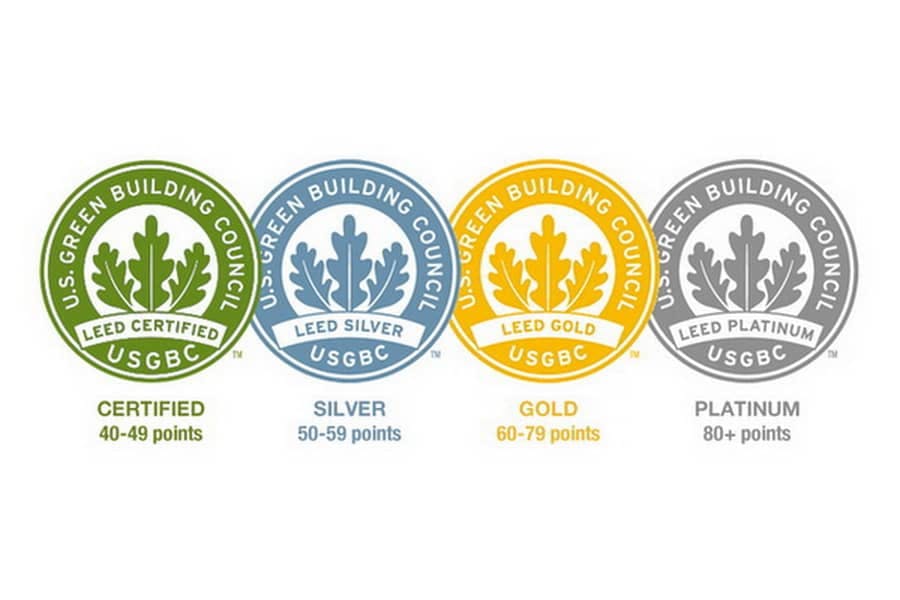
LEED Certification: How Much Does It Cost?
Several factors can influence the cost of LEED certification: the larger the building, the more complex its construction and management, the more points need to be verified, and the higher the cost. Similarly, the cost varies depending on the level of certification sought.
On average, the cost of LEED certification is estimated at €6,000 to €7,500 for 10,000 square meters.
What are the Benefits of Pursuing LEED Certification?
LEED certification, besides being a recognized sustainability label, offers multiple advantages for owners, occupants, and the environment.
Increased Property Value
LEED-certified buildings enjoy significant appreciation in the real estate market. Certification is indeed a guarantee of quality and sustainability, two values emphasized today. Moreover, with increasingly stringent environmental regulations and expected developments in the coming years, a LEED-certified building ensures compliance with regulatory standards. All of this contributes to making the building attractive.
Substantial Savings on Energy Performance
A LEED-certified building offers numerous benefits in terms of management and occupancy. Thanks to well-thought-out design and the use of advanced technologies, it experiences a considerable reduction in energy and water consumption compared to a standard building. Additionally, materials used in LEED constructions are often recycled and locally sourced, thus reducing the project's carbon footprint. The comfort and health of occupants are also improved due to better indoor air quality.
To read: How to Reduce Energy Consumption in Buildings?

A Positive Impact on the Environment and Society
LEED certification goes beyond the technical aspect of construction. It also encompasses a commitment to society and the environment. A sustainable LEED building helps reduce greenhouse gas emissions, preserve natural resources, and improve urban biodiversity. Moreover, these projects promote the development of environmental awareness by educating and raising awareness among occupants and, more broadly, people residing nearby about sustainable development issues.
LEED vs. HQE: What are the Differences?
LEED certification and the HQE label (High Environmental Quality) are two major references in the field of sustainable construction, one American and the other French. Designed with many common goals, these two labels still have some differences.
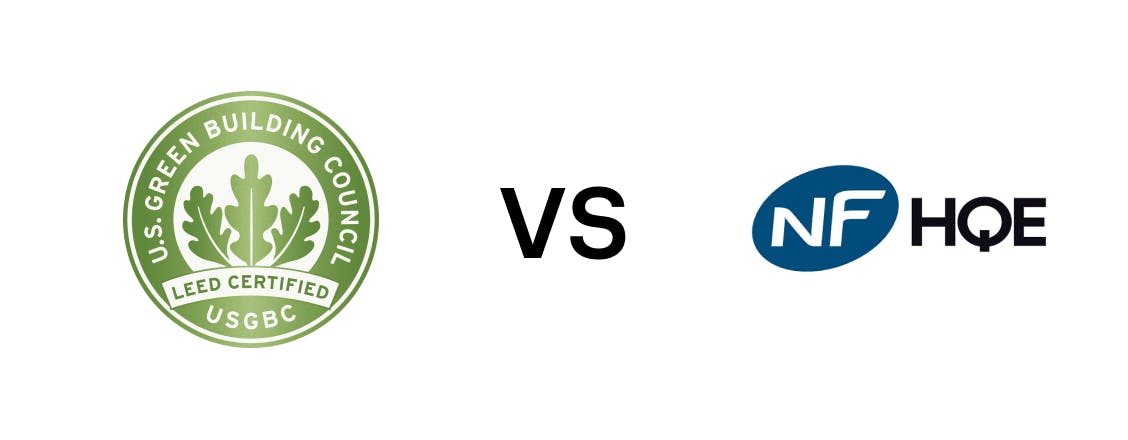
Many Common Points
LEED and HQE converge on several fundamental aspects. Both certifications aim to improve the energy performance of buildings, reduce their carbon footprint, and promote the use of ecological materials. They also encourage the improvement of indoor air quality and occupant comfort. These certifications are reference tools for construction projects aspiring to reduce environmental impact and achieve optimal energy efficiency.
Key Differences Between HQE and LEED
The "pluses" of LEED certification
LEED certification is a little more environmentally oriented than HQE:
- Special attention to the building site.
- Focus on construction and decoration materials.
- Slightly more demanding criteria in terms of energy.
The "pluses" of HQE certification:
The HQE label emphasizes certain elements that are absent or less important in LEED certification:
- Occupant well-being.
- Acoustic comfort.
- Visual comfort (lighting, etc.).
- Sanitary quality of spaces and water.
LEED Certification and Wattsense Solution: A Powerful Combination
Integrating smart solutions like those offered by Wattsense can help obtain LEED certification for buildings.
Optimize Building Management with Wattsense
Wattsense is a technological solution that enables efficient management of buildings in terms of energy and resources. By connecting to all the technical equipment and IoT sensors in your buildings, Wattsense provides access to precise, real-time data on energy consumption, CO2 emissions, and other environmental parameters. You can thus monitor all building consumptions on a console that centralizes all information and manages resources flexibly and economically.
With Wattsense, many prerequisites are already in place to obtain LEED certification
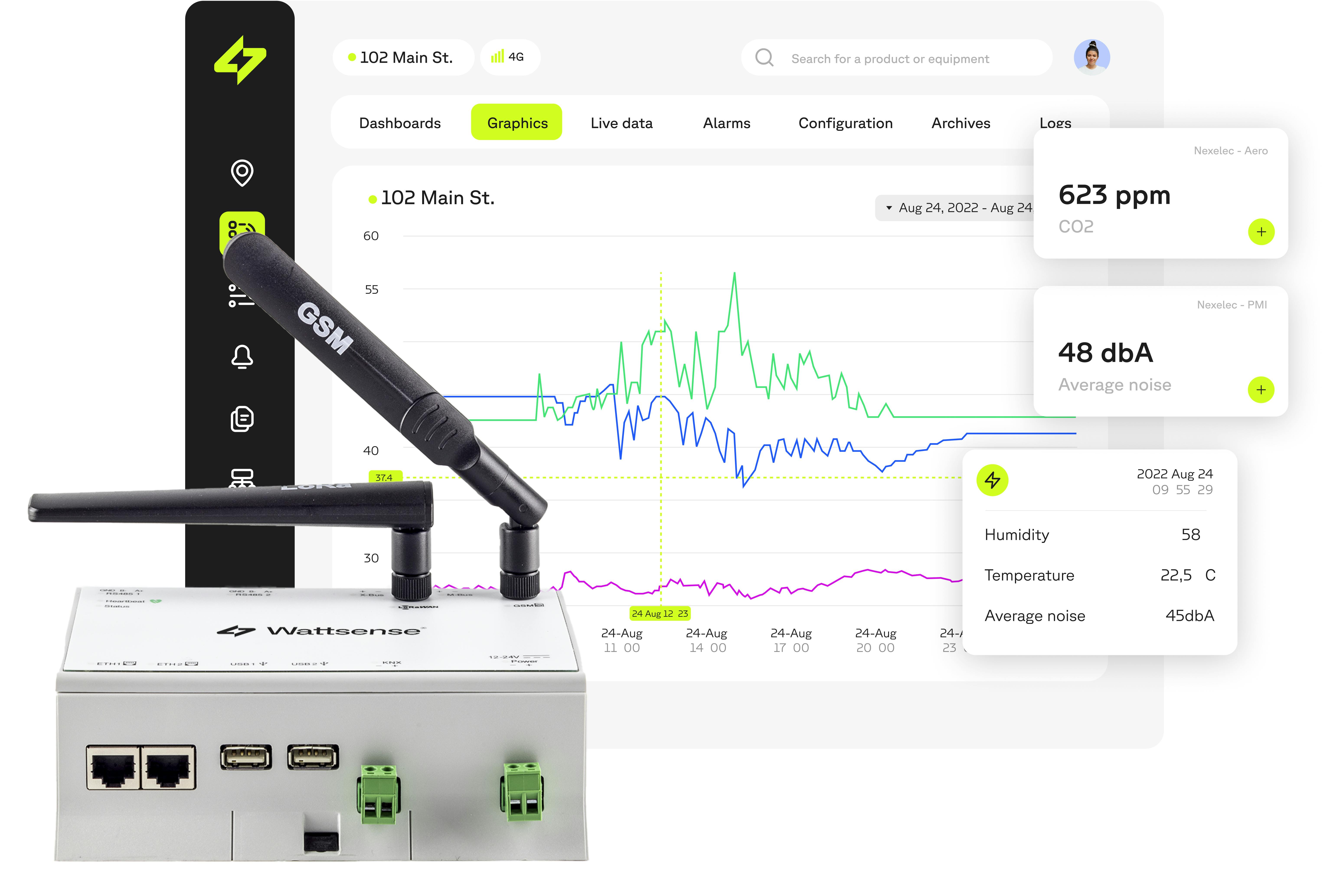
Economical and Ecological Resource Management
Wattsense plays a vital role in economic resource management, a central element allowing buildings to meet LEED certification criteria related to water and energy management. Our solution is the ideal tool for controlling and implementing water, gas, and electricity consumption strategies. By centralizing all data, it provides an overview of consumption over time and where to take action. Advanced features like alarms in the Wattsense Tower allow quick detection of potential overconsumption or equipment failure.
Wattsense Improves Occupant Comfort
Wattsense helps significantly improve occupant comfort while enabling rational and therefore economical consumption. Our solution, combined with sensors, gives you access to all the necessary data and features to have precise control over lighting, acoustics, and room temperature. No more unnecessarily heated empty rooms or undetected water leaks. Optimized management of these factors results in a better quality of life in work and living spaces.
Continuous Control of Water and Air Sanitation
Wattsense's centralization of technical equipment data also ensures continuous control of air and water quality, guaranteeing a healthy environment for occupants. This control is vital to meet the strict requirements of LEED certification for indoor environmental quality.
Therefore, Wattsense is an excellent partner for companies seeking LEED certification for their buildings. By centralizing and efficiently managing building environmental data, and by connecting its solution with over 800 pieces of equipment, Wattsense enables optimized management of energy, and water, and actively contributes to occupant well-being.
Want to learn more about the Wattsense connectivity solution?
Discover our solution